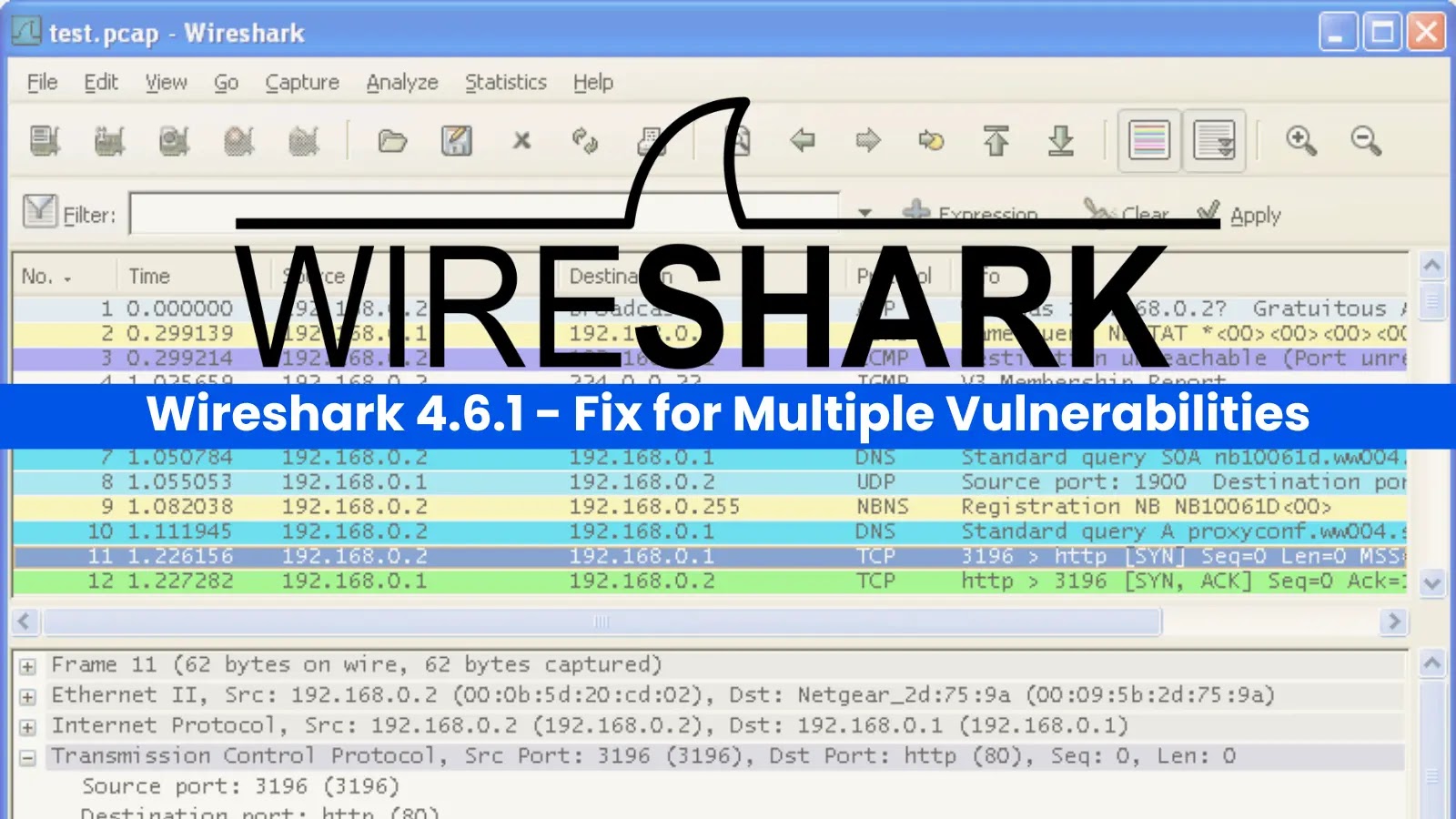
Wireshark Vulnerabilities Let Attackers Crash by Injecting a Malformed Packet
In the dynamic landscape of network security, vigilance is paramount. Even the most essential tools, designed to secure and monitor our digital infrastructure, can harbor vulnerabilities. Such is the case with Wireshark, the ubiquitous network protocol analyzer. The Wireshark Foundation has recently issued a critical security update, version 4.6.1, addressing several concerning vulnerabilities that could be exploited to disrupt network operations.
This update is crucial for anyone using Wireshark, as it patches flaws that could allow attackers to trigger denial-of-service (DoS) conditions simply by injecting a maliciously crafted network packet. Understanding these vulnerabilities and applying the necessary patches is not just good practice; it’s a fundamental requirement for maintaining network stability and integrity.
Understanding the Core Wireshark Vulnerabilities
The latest Wireshark security update primarily targets two key dissectors: Bundle Protocol version 7 (BPv7) and Kafka. Dissectors are fundamental components of Wireshark, responsible for parsing and interpreting various network protocols. Flaws in these dissectors can lead to severe consequences, as demonstrated by the recently identified issues.
Specifically, the vulnerabilities allow a remote attacker to crash Wireshark by providing a malformed packet structure. This type of attack falls under the category of denial-of-service, where the legitimate functionality of a system is disrupted or made unavailable to users. For a network analyst or administrator relying on Wireshark for real-time monitoring or incident response, such an unexpected crash can be detrimental, potentially hindering critical investigative work.
- Bundle Protocol Version 7 (BPv7) Vulnerabilities: This protocol is designed for intermittently connected networks. Exploiting flaws in its dissector could lead to unexpected Wireshark termination when processing specially crafted BPv7 packets. The CVE associated with a related BPv7 vulnerability is CVE-2022-28042, highlighting issues related to out-of-bounds reads.
- Kafka Dissector Vulnerabilities: Apache Kafka is a distributed streaming platform, and its dissection in Wireshark is vital for monitoring Kafka message traffic. Malformed Kafka packets exploited vulnerabilities in the dissector, causing Wireshark to crash. A relevant CVE in this area is CVE-2022-28041, which discusses a buffer overflow vulnerability.
These vulnerabilities underscore the importance of validating all input, even from seemingly benign network traffic. An attacker doesn’t need to gain deep access to the network; merely sending a malformed packet is sufficient to trigger the exploit against unpatched Wireshark installations.
Impact of a Denial-of-Service Attack on Wireshark
While a direct DoS attack on Wireshark might not seem as damaging as a data breach or system compromise, its implications for network operations and security teams are significant:
- Disrupted Troubleshooting: During a critical network incident or performance issue, Wireshark is often the first tool security professionals turn to. A sudden crash prevents effective analysis and delays resolution, potentially prolonging downtime or impact.
- Blinded Monitoring: Organizations often use Wireshark for continuous network traffic monitoring. A DoS attack can temporarily blind analysts to ongoing threats or suspicious activities, creating a window of opportunity for other malicious actions.
- Resource Exhaustion: Repeated crashes can consume system resources, further impacting the performance of the machine running Wireshark and potentially other co-located applications.
- Loss of Captured Data: An unexpected crash during a packet capture session can lead to the loss of valuable forensic data, hindering post-incident analysis.
These are not merely theoretical concerns. In a fast-paced security environment, every second counts, and reliable tools are indispensable.
Remediation Actions: Patching is Paramount
The most direct and effective remediation for these Wireshark vulnerabilities is to update to the latest secure version. The Wireshark Foundation has specifically released version 4.6.1 to address these flaws.
Immediate Steps:
- Update Wireshark: Download and install Wireshark version 4.6.1 or later from the official Wireshark website (https://www.wireshark.org/download.html). This is the single most critical step.
- Verify Installation: After updating, confirm that the new version is correctly installed by checking the “About Wireshark” section.
- Review Network Access Policies: While patching is crucial, consider reviewing whether your Wireshark instances are exposed to untrusted network segments more than necessary. Applying the principle of least privilege to network access, even for analysis tools, can provide an additional layer of defense.
- Sandbox Environments: For highly sensitive analyses or when dealing with potentially malicious trace files, consider running Wireshark within a sandboxed environment or a virtual machine. This isolates any potential exploits and prevents them from affecting the host system.
Staying informed about security advisories from software vendors, especially for critical tools like Wireshark, is a proactive measure that prevents potential disruptions and strengthens your overall security posture.
Tools for Network Security and Vulnerability Management
While Wireshark is an analysis tool, a comprehensive security strategy involves a suite of tools for detection, scanning, and mitigation:
| Tool Name | Purpose | Link |
|---|---|---|
| Nessus | Vulnerability scanning and assessment | https://www.tenable.com/products/nessus |
| OpenVAS | Open-source vulnerability scanner | http://www.openvas.org/ |
| Snort | Intrusion Detection/Prevention System (IDS/IPS) | https://www.snort.org/ |
| Suricata | High-performance IDS, IPS, and Network Security Monitoring engine | https://suricata-ids.org/ |
| Metasploit Framework | Penetration testing and exploit development | https://www.metasploit.com/ |
Conclusion: Stay Updated, Stay Secure
The Wireshark vulnerabilities, exploitable by injecting a malformed packet, serve as a stark reminder that no software is entirely infallible. Even the tools designed to help us understand and secure our networks require diligent maintenance. The availability of version 4.6.1 provides a straightforward path to mitigate these denial-of-service risks in the BPv7 and Kafka dissectors.
For IT professionals, security analysts, and developers relying on Wireshark, updating immediately is non-negotiable. Proactive patching, combined with a robust understanding of network security principles and the intelligent use of complementary security tools, forms the foundation of a resilient and secure digital environment. Don’t let a simple malformed packet bring your critical analysis capabilities to a halt.




